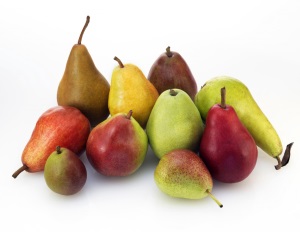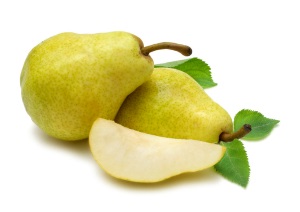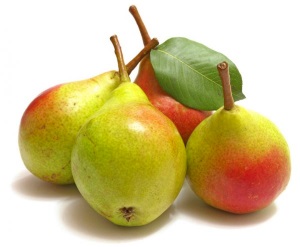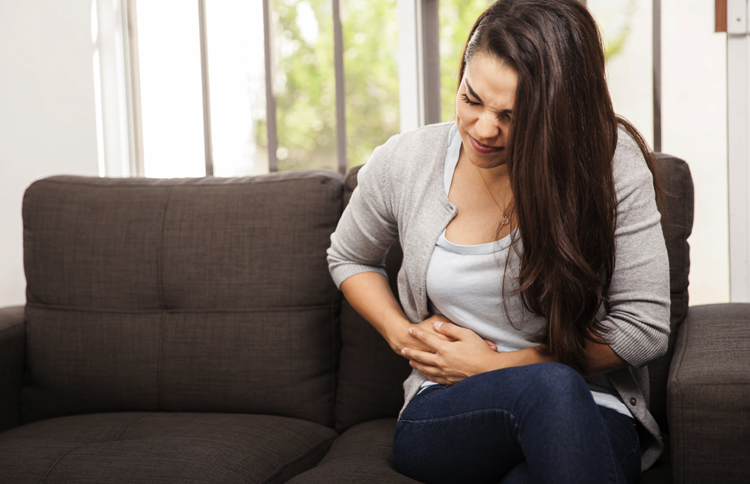After birth, the child has to " not sweet" His body, from now on, is forced to adapt to life separately from his mother. The need for sleep and nutrition are his top priorities. If sleep depends only on external factors, then nutrition is directly, for now, connected with the mother.
If a mother eats foods that cause allergies in infants, the baby’s body will definitely react to this. After all, everything that the baby’s mother eats is delivered to him along with.
Small reddish rash on baby's skin- This is most likely a reaction to an allergen. Therefore, a young mother needs to be more attentive to what she eats.
Manifestation of food allergies in infants
- Reddish rash on the skin. First of all, the cheeks, elbow bends;
- Angioedema - angioedema;
- Prolonged regurgitation of milk after feeding;
- Diarrhea or vice versa constipation;
- Bloating and gases.
If you notice these symptoms, you need to urgently pay attention to your diet. Remember what foods were consumed before symptoms appeared. And if necessary exclude foods from the diet that cause allergies in infants.
Foods that cause allergies in infants
- Cow's milk. This product often becomes an allergen for infants. As well as some types of other milk;
- Eggs;
- Fish and seafood;
- Red vegetables and fruits;
- Citrus;
- Chocolate and cocoa products;
- Pomegranate juice;
- All types of nuts;
There may also be an allergy to foods with low allergenic probability:
- Rice porrige;
- Banana;
- Rose hip;
- Apricots and peaches;
- Turkey meat;
- Lamb meat;
- Cucumbers and zucchini;
- Pears and apples.
For severe manifestations allergic reaction for the baby, for any food products, need to see a pediatrician. He will prescribe the appropriate drug. And he will recommend that the mother keep a food diary in case the allergies are recurring.
Allergy-causing foods should be consumed with extreme caution. After all, a newborn is just beginning to develop all kinds of protective functions of the body. And if, immediately after the birth of your baby, you are inattentive to your diet, you can create nutritional problems for yourself and your little one.
Proper nutrition is very important for an expectant mother - especially when it comes to pregnancy against the background of any chronic diseases. What diets can the doctor prescribe for you as treatment?
Allergies can appear at any age, but most often their manifestations begin in childhood, and a predisposition to allergies is formed in the mother’s womb and largely depends on the nutrition of the expectant mother.
Allergy (the approximate translation of this term from Greek is “another reaction”) is a pathological (painful) change in the body’s sensitivity and its reaction to contact with certain external and internal environmental factors - allergens. Allergens can enter the body through Airways, digestive organs, through the skin and mucous membranes, through the blood (in case of allergies to vaccines). Even bacteria, viruses and microscopic fungi can be allergens.
Why do allergies occur?
Over the past decade, doctors around the world have noted a steady increase in various allergic manifestations - from isolated cases to severe, lifelong diseases - in both children and adults. This is most likely due to an increase in the share chemical substances in our lives, the quality of feed in livestock farming and fertilizers in crop production, environmental pollution, which is especially pronounced in large cities. And also with the increasing availability of food products from other climatic latitudes: tropical fruits, seafood, exotic seasonings, not to mention food products with various chemical additives such as preservatives, dyes and flavor enhancers.
The earliest prevention
Everyone knows that it is much easier to prevent the development of another health problem than to cure the resulting disease later. This is true in many respects for allergies. Of course, it is impossible to completely guarantee freedom from various allergic manifestations, but it is quite possible to reduce the risk of their development. This is especially important if the baby’s parents or immediate relatives have any allergic reactions. A properly selected hypoallergenic diet for a baby is necessary and understandable, but prevention of the development of allergies must begin much earlier, even before birth and, of course, during the period of breastfeeding. Special so-called mast cells are responsible for the development of allergies, which, when they encounter a “familiar” allergen, release a special biologically active substance - histamine, and this, in turn, causes extremely unpleasant changes in the body, united by the name “allergy”. So, the acquaintance of mast cells with allergens (sensitization, that is, setting the child’s body to an incorrect - allergic - reaction to any food product) is possible even at the stage of intrauterine development. This can also happen in cases where the mother herself is not allergic to this product nutrition. Thus, a child who has had contact with allergens in utero is born already prepared for allergies. For example, the occurrence of protein allergies in breastfed children cow's milk associated with a young mother’s excessive passion for milk and dairy products, both during pregnancy and during breastfeeding. Therefore, it is so important for a pregnant or lactating woman, especially if she or the child’s father has allergies (and any form of allergy is important: to animal fur, dust, flowering plants, and not just to food), to follow a hypoallergenic diet. Proper hypoallergenic nutrition is especially important during the last trimester of pregnancy.
What is prohibited?
The basic principle of a hypoallergenic diet is the exclusion of foods that most often cause allergic reactions, that is, foods whose proteins can trigger the activation of mast cells with the subsequent release of histamine into the blood.
It should be noted that the allergic profile (list of allergens) of each allergy sufferer is individual and any food product can play this role for him. Please note that the method culinary processing product significantly affects the degree of allergenicity. For example, fried meat causes an allergic reaction more often than boiled meat.
Cross allergy
In allergology, there is the concept of cross-allergy, in which an allergic reaction is triggered not by an already familiar allergen, but by a product very similar to it, that is, having the same or very similar substances in their chemical structure. The foods and non-food allergens with the most common cross-allergic reactions are presented below.
Egg- chicken meat and broth; quail eggs and meat; duck meat; sauces, creams and mayonnaise that include egg components; feather pillows; some medications(INTERFERON, LYSOZYME, PROPOFOL (DIPRIVAN), some vaccines).
Cow's milk — goat milk; products containing cow's milk proteins; milk formulas; beef, veal and meat products from them; cow hair, etc.
Kefir and kefir yeast— mold fungi, mold varieties of cheese (Roquefort, Brie, Dor-Blue, etc.), yeast dough, kvass, penicillin antibiotics, mushrooms.
Fish— caviar, seafood (crabs, shrimp, lobsters, lobsters, mussels, etc.); dry food for aquarium fish (daphnia).
Carrot- parsley, celery, anise, apples, potatoes, rye, wheat, birch pollen, avocado, pineapple, vitamin A.
Beet- spinach, sugar beets.
Potato- eggplants, tomatoes, green and red peppers, peppers, tobacco.
Legumes- peanuts, mango.
Apples- pear, quince, peach, nectarine, apricot, plum; pollen of birch, alder, wormwood.
Strawberry- raspberries, strawberries, blackberries, currants, lingonberries.
Plum- almonds, apricots, cherries, nectarines, peach, cherries, prunes, apples. Banana - wheat, kiwi, melon, avocado, latex, plantain pollen.
Kiwi- banana, avocado, nuts, flour (rice, buckwheat, oatmeal), sesame, latex, birch pollen, cereal grasses.
Peanut- soybean, banana, stone fruits (plum, peach, apricot, nectarine, sweet cherry, cherry, prune), green pea, tomatoes, latex.
Hazelnut- other types of nuts, kiwi, mango, flour (rice, buckwheat, oatmeal), sesame, poppy, birch and hazel pollen. Cereals - wheat, rye, barley, oats, corn, rice and related pollen. Peach - apricot, nectarines, plum, guava, banana.
Garlic- onions, asparagus. This list should be especially carefully studied by women prone to allergic reactions in order to protect themselves, as well as mothers of small allergy sufferers when choosing products for their children.
Nuts- ice cream, confectionery, chocolate, candy.
Soybeans- hamburgers, chopped meat, sausages, dairy products, confectionery, sweets, cocoa, anesthesia drug PROPOPHOL (DIPRIVAN).
Anise- sweets, confectionery, perfumes.
Yeast — flour products, kvass, mayonnaise, ketchup, products with vinegar.
Molds— these microscopic fungi can contaminate nuts, seeds, and citrus fruits.
Hidden allergens
In the world of allergies, there is another pitfall - hidden allergens that are present in products, but are not visible and are not always listed in the “ingredients” column on the label. The most dangerous in this regard are nuts, milk, eggs and seafood. They may be contained in the following products that are familiar to us:
Egg- ice cream, confectionery, cutlets, mayonnaise, sausages etc.
Chicken meat- ham, sausages, etc.
Allergies in numbers
According to global medical statistics, 6-8% of children and 1.5% of adults suffer from food allergies. And in developed countries, 10-28% of children suffer from atopic dermatitis (allergic skin disease) alone. If both parents suffer from allergies, then the risk of developing allergies in their children reaches 50%. In terms of prevalence, allergic diseases rank first among all non-infectious diseases in young children.
What are allergens?
Allergists (doctors who study and treat allergic diseases) distinguish three groups of products according to the degree of likelihood of developing an allergy to them in the majority of allergy sufferers, but without taking into account the individual characteristics of each person, dividing them, respectively, into products with high, medium and low allergenic activity.
Highly allergenic foods are also called "obligate allergens". These are allergens that are required, even when consumed in small quantity, promote the release of histamine into the blood. These include: eggs, fish, seafood, caviar, wheat, rye, carrots, tomatoes, peppers, strawberries, strawberries, raspberries, vegetables, fruits and berries of bright red and orange color, citrus fruits, kiwi, pineapples, pomegranates, mangoes, persimmons, natural coffe, cocoa, chocolate, mushrooms, nuts and honey.
Product group with average allergenic activity: whole milk, butter, beef, chicken, buckwheat, oats, rice, peas, beans, soybeans, potatoes, beets, peaches, apricots, cranberries, lingonberries, bananas, dark red cherries, blueberries, black currants and rose hips.
Low allergenic products: fermented milk products, rabbit meat, turkey meat, lean pork, lean lamb, refined oil, millet, pearl barley, cauliflower and white cabbage, zucchini, squash, cucumbers, green varieties of apples and pears, white and red currants, parsley and dill.
We cannot ignore the above-mentioned all kinds of chemical additives in food products. They can also provoke the development of allergic reactions. The most dangerous from this point of view are the following food additives:
Preservatives:
- sorbic acid (E 200-203);
- benzoic acid and its derivatives (E 210-219);
- sulfites and their derivatives (E 220-227);
- nitrites (E 249-252).
Antioxidants:
- butyl hydroanisole (E 321).
Food colorings:
- tartrazine (E 102);
- yellow-orange S (E 110);
- azorubine (E 122);
- amaranth (E 123);
- red cochineal (E 124);
- erythrosine (E 127);
- diamond niello BN (E 151);
- annatto (E 160).
Flavoring additives:
- monosodium glutamate (E 621);
- potassium glutamate (E 622);
- calcium glutamate (E 623);
- ammonium glutamate (E 624);
- Magnesium glutamate (E 625).
A properly selected diet, taking into account the needs of a growing and developing baby and the characteristics of the mother’s body, allows us to provide a pregnant woman with a variety of nutritious nutrition, as well as reduce the risk of allergic reactions and chronic diseases of an allergic nature in our children.
Should be excluded
- broths, marinades, salted and spicy dishes, smoked products, canned food and spices;
- products containing dyes and preservatives;
- carbonated cold drinks, kvass;
- products containing histamine liberators (products that either themselves contain histamine or necessarily release it): sauerkraut, radishes, radishes, fermented cheeses, ham, sausages, beer;
- fish, fish products (fish broths, canned fish, caviar, etc.) and seafood;
- poultry (goose, duck, chicken, etc.);
- eggs;
- vinegar, mustard, mayonnaise, horseradish;
- tomato, eggplant;
- mushrooms;
- citrus fruits (oranges, lemons, grapefruits, limes, etc.);
- nuts (hazelnuts, almonds, peanuts, etc.);
- strawberries, wild strawberries, melon, pineapple;
- chocolate and chocolate products;
- coffee.
Need to limit
Products, the consumption of which should be limited to pregnant and lactating women with a predisposition to allergies:
- whole milk (can only be used in porridge and tea);
- sour cream (can only be added to hot dishes and salads);
- bakery and pasta made from flour premium and semolina;
- confectionery, sweets.
Can be consumed
If you are prone to allergies, you can eat:
- soups (vegetarian vegetable and cereal);
- meat ( low-fat varieties beef, pork, rabbit meat, turkey fillet in boiled, stewed form, and also in the form of steam cutlets);
- fermented milk products (cottage cheese, curdled milk, kefir, bifidokefir, bifidok, acidophilus, yoghurts without fruit additives, etc.);
- porridge (buckwheat, rolled oats, corn, rice, etc.);
- vegetables and fruits of green, white color: colored and white cabbage, zucchini, squash, cucumbers, green varieties of apples and pears, parsley, dill;
- 2nd grade wheat bread, rye, “Darnitsky”;
- drinks (tea, compotes, red or white currant fruit drinks);
- butter, olive, sunflower (as an additive to dishes).
In contact with
Pear is a healthy fruit and loved by many. And this is no coincidence. The pears are aromatic, moderately sweet, filled with juice, useful substances and summer mood.
All pregnant women are careful about their menu, carefully select products and monitor the quality of the food they eat. Where to take your place pear- in the honor box healthy foods or on the margins of proper nutrition?
In contact with
The answer is not as obvious as it might seem. Therefore, let's look at the pear from all sides and make a fair verdict.
General information
Pears have been common in our country for a long time. The wild pear growing in the forests was held in high esteem. From its fruits, folk entertainers baked pies, made compotes and infusions, made fragrant pear kvass, prepared pieces for the winter - dried, dried and even ground into flour.
Nowadays, pears are only slightly inferior in popularity. Exists incredible amount desserts. Pears are used to make jam, preserves and marmalade, make fillings for yoghurts and curds, grind them for baby purees, and eat them in fresh and sometimes pickled.
Pears during pregnancy
Benefit
 Pregnant women love pears for good reason. , necessary while expecting a child, is available in pear fruits in quantity 12 mcg per 100 grams of product.
Pregnant women love pears for good reason. , necessary while expecting a child, is available in pear fruits in quantity 12 mcg per 100 grams of product.
In the first trimester of pregnancy, pears can be a tasty addition to the expectant mother's breakfast or afternoon snack. Moreover, a pregnant woman’s body rarely reacts to pears and other unpleasant phenomena.
In a pear decent ascorbic acid content, which helps to fully assimilate. Pears are rich in potassium, and without this microelement it is impossible to normal operation heart, because the heart of a pregnant woman pumps significantly more blood per minute than in the normal state.
Potassium also prevents, promotes cell renewal and ensures uninterrupted activity nervous system. Pears have anti-inflammatory and antimicrobial properties.
Another undoubted advantage of pears is that they improve your mood expecting mothers, help relieve anxiety and emotional stress.
And finally a fresh large pear is only a hundred calories, and modest caloric intake is so important for maintaining good shape during pregnancy.
Harm
Fiber content of pears may become during pregnancy and good quality, and a worrying factor. Fiber enhances intestinal motility and causes excess gas formation (especially in combination with mild herbal laxatives).
You should also be wary of stomach upset, especially if you eat more than five fruits a day.
Indications
 Expectant mothers should include pears in their diet if the indicator leaves much to be desired.
Expectant mothers should include pears in their diet if the indicator leaves much to be desired.
If a woman is prone to, a pear will also come in handy; it will help delicately and quickly. Pears grown in local orchards will be especially good for this quality - they have thicker skins and a higher fiber content.
In the first trimester, when many pregnant women complain of loss of appetite, it will be increased pear juice drunk at breakfast. The juice contains a lot of glucose and fructose, which affect the appetite like a red cloth on a Spanish bull.
If you eat pears in harsh winter, then they will support immunity at the required level and will not allow pathogenic microbes to enter the body.
And if you still have an unpleasant cold, then a glass of pear nectar or compote quickly cools the body and reduces temperature.
Contraindications
There are almost no contraindications for eating pears. But it should still be remembered that You shouldn't eat pears on an empty stomach, problems with excess stomach acid may occur.
Try not to mix pears with meat products - in the rules separate power supply There is such a point.
Methods of use
 There are so many ways to prepare these wonderful fruits! From unusual puff pastries pear pies before classical conservation.
There are so many ways to prepare these wonderful fruits! From unusual puff pastries pear pies before classical conservation.
Dried pears– a great idea for a snack during intellectual work. Pears boiled in light syrup are a wonderful low-calorie afternoon snack that won’t add pounds and will leave you feeling full until dinner.
Pear compote will refresh on a hot summer afternoon, and skim cheese, poured with a spoon pear jam, can become your favorite dessert for the whole nine months.
Precautionary measures
Choose ripe, soft, but not overripe fruits. Firm pears may disappoint you when they mature. If pears are removed from the branches too early, then most likely they will not have pleasant aroma and they will lose all their vitamins on supermarket shelves.
Also try to buy fruits from domestic producers. Foreign pears are likely to have a high nitrate content, especially in the peel and core of the fruit.
Don't eat unwashed pears, their path to our table is very tortuous and not always sterile. And most importantly, keep it in moderation; two or three small pears are enough to provide a pregnant woman with the need for vitamins and microelements.
 A fresh ruddy pear on a pregnant woman’s menu is a welcome guest. Eat these fruits without fear of getting an allergic reaction; allergies to domestic pears are extremely rare.
A fresh ruddy pear on a pregnant woman’s menu is a welcome guest. Eat these fruits without fear of getting an allergic reaction; allergies to domestic pears are extremely rare.
Pear is a fairly healthy fruit, the consumption of which enriches the human body with vitamins and strengthens the immune system.
But for some people, this fruit can cause a severe allergic reaction. This response of the body is a hereditary factor.
Let’s say that if the baby’s mother suffered from an allergy to fruits, it is quite possible that similar reactions would occur in her child.
Relatively often, an allergy to pears is accompanied by a similar reaction to quinces and apples. There are cases when an allergy occurs not only when eating a pear, but also when a tree blooms - to pollen.
It should be noted that pear allergens are destroyed when heat treatment, and allergy sufferers can often eat this fruit after boiling, baking, etc.
Symptoms of pear allergy
People of any age group are susceptible to allergies to this fruit. most often more pronounced in children than in adults.
The body's reaction to an allergen is manifested by the following symptoms:
- Digestive (vomiting, diarrhea, abdominal pain);
- Problems with respiratory system(severe conjunctivitis, bronchospasms, nasal congestion,);
- (urticaria, swelling).
In case of severe damage to the esophagus, the patient experiences severe chest pain and dysphagia during swallowing. Quite severe pain in the abdominal cavity, stomach and intestinal bleeding may occur. With a pronounced allergic reaction, liver damage and jaundice may occur. The manifestation of certain symptoms is very individual.
Treatment of pear allergies
If allergic reactions occur when eating pears, you should immediately seek help from an allergist.
The hospital conducts a special analysis to accurately determine the allergen. The presence of certain antibodies indicates an allergic reaction to a specific product.
IN medical institution desensitizing therapy is prescribed, and in particular difficult cases strong drugs are prescribed. Modern antihistamines can restore the patient's health.
You should adhere to the diet prescribed by your doctor. It will “put in order” the functioning of the digestive system. In the future, an allergic person should completely exclude pears and their derivatives - dried fruits and candied fruits - from their diet. If an allergy to pollen occurs, you should take the prescribed drops or drops on time.
How to prevent a possible allergy to pears?
It is quite possible to avoid any food allergy, including pears. It should be understood that an allergic reaction to something is a response of an organism with a weakened immune system. And immunity is developed in a person during intrauterine development. Future mom A child who cares about the health of her baby must give up bad habits and an unhealthy lifestyle. Long lasting breast-feeding allows the child to receive biologically necessary active substances, which are so necessary for a growing organism. Healthy eating– this is the key to the absence of unwanted reactions of the body.



